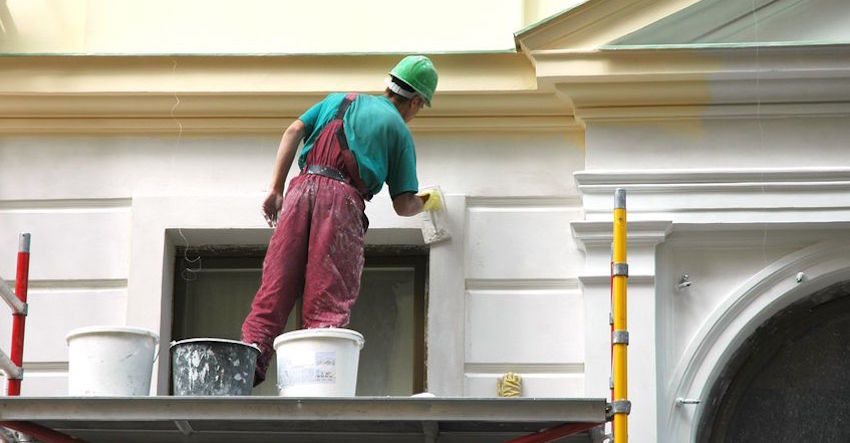How Weather Influences Exterior Painting
 Tackling an exterior paint job takes a great deal of planning. The painter must closely study the weather conditions for an attractive and long lasting end result. Keep reading to learn how weather influences exterior painting.
Tackling an exterior paint job takes a great deal of planning. The painter must closely study the weather conditions for an attractive and long lasting end result. Keep reading to learn how weather influences exterior painting.
The weather could be the deciding factor that can make or break the outcome of your exterior paint job. It goes without saying that it is vital to check the local weather forecast as part of your pre-painting preparation for an exterior paint session. The ideal conditions for such a venture are a day with mild temperatures, low humidity and little or no wind. And the worst conditions are extreme heat or cold.
Elements such as the sun, rain, snow and wind all take a toll on the exterior facade of a house. These conditions lead to considerable wear and tear. Exposure to UV rays causes exterior paint to fade, chalk and lose its original glow. Also, temperature variation results in expansion and contraction of the surface resulting in cracking of paint. Do your best to avoid some of the ways weather influences exterior painting with these tips.
Surface Preparation
For professional results, it is essential to prepare the exterior surface before painting. First of all, you must thoroughly clean the surfaces, preferably with a bleach solution or a pressure washer. You should remove all dirt, mold and mildew. Proper preparation also includes scraping away as much old paint as possible. In addition, you will want to repair chips, cracks, and splinters. Then you should let the surface dry out completely. And finally, using an appropriate primer before you paint is equally important.
Painting the Exterior
Once the primer is dry, it is time to apply the exterior paint. Be sure to apply the paint early enough in the day to allow it to dry out slowly before the evening dew sets in. If the surface paint has not thoroughly dried out, the paint tends to fade fast. Fading paint results in loss of gloss and appearance.
In addition, it is best to paint when the sun is not shining directly on the area your are painting. The general practice is to paint the exteriors in the shade since exposure to the sun and wind can cause paint to dry rapidly leading to an uneven texture with marks and blisters.
Better Formulated Weather-Resistant Paints
Until recently, painting in cold weather was not a common activity. Many professional painters postponed their exterior painting jobs until spring. Now, with specially formulated paints and primers painting contractors have an extended painting season. And with cold-weather coating systems made especially to withstand temperatures as low as 35°F readily available, painters no longer have to wait until spring to do their job. Hence, it becomes easier to meet deadlines, without having to experience any fall in revenues. However, painters must still avoid extreme weather conditions to get the most attractive paint job.
Don’t Let the Weather Influence Your Exterior Paint Job
Exterior house paint must be strong enough to withstand the most extreme conditions that nature bestows. The best possible exterior house painting results are dependent on good surface preparation, the best quality paints and equipment, and also on ideal weather conditions. If you have questions about which paint you should use on the exterior of your home or if you would like a professional to do the painting for you, contact the experts at Patriot Painters today by calling 770-262-7345.
